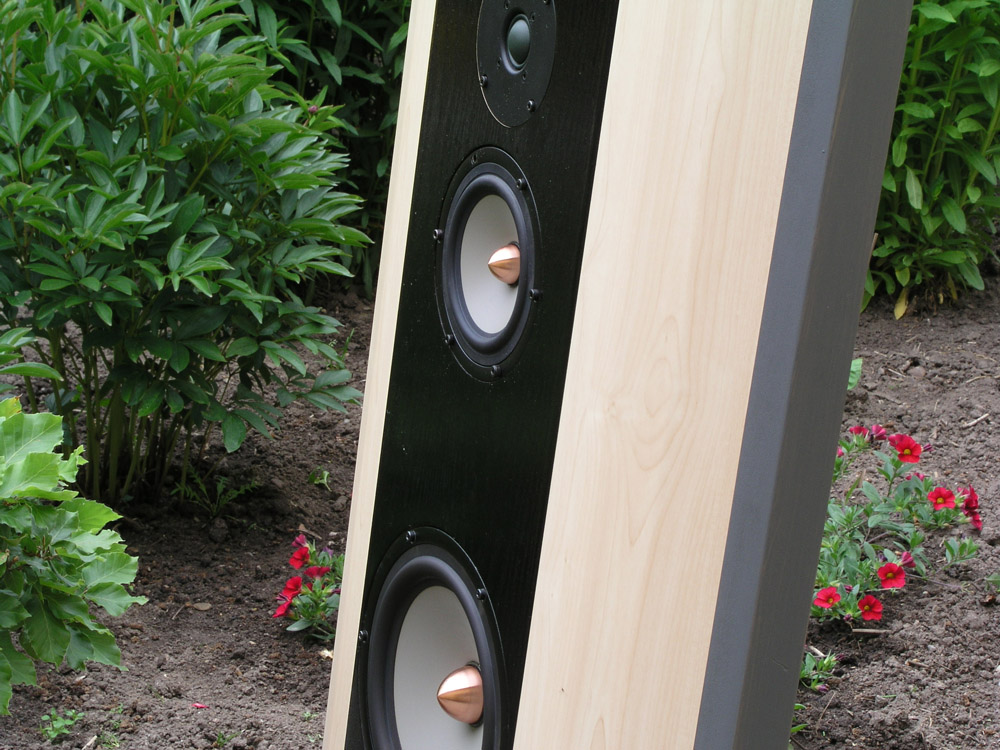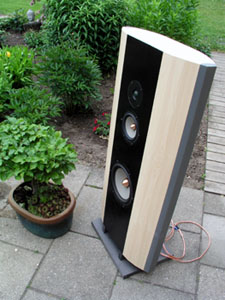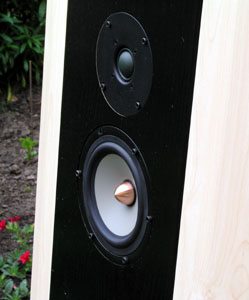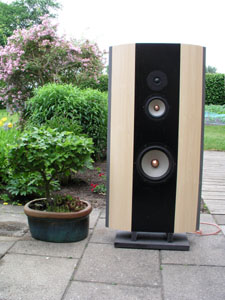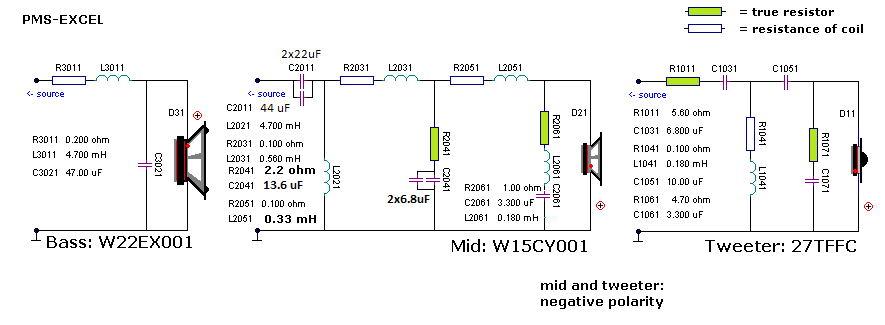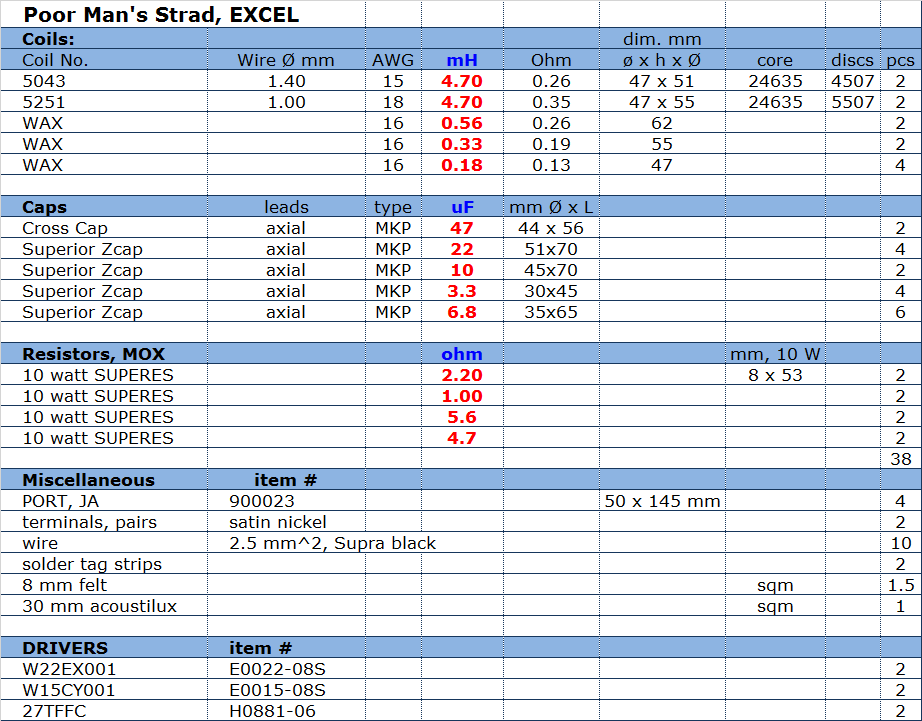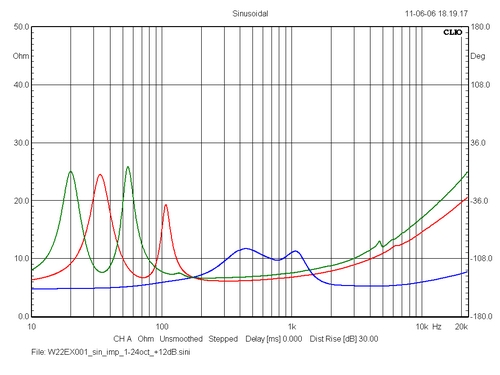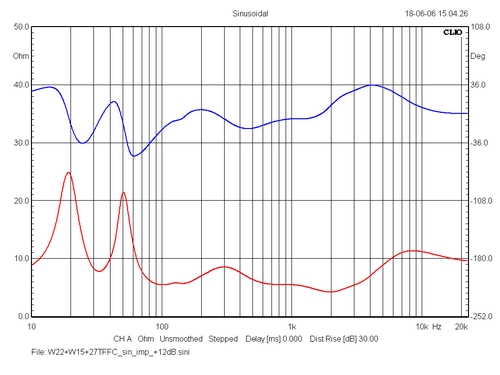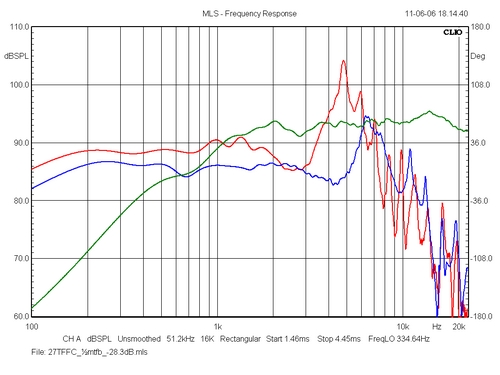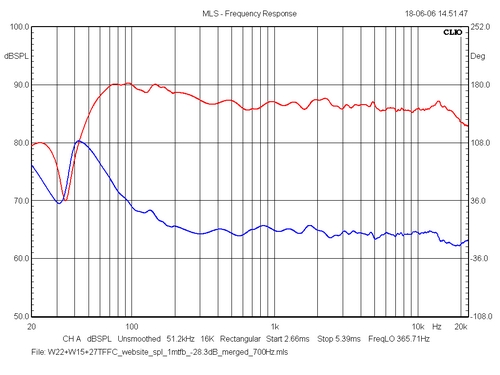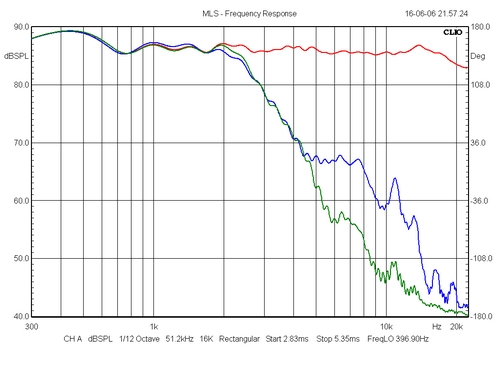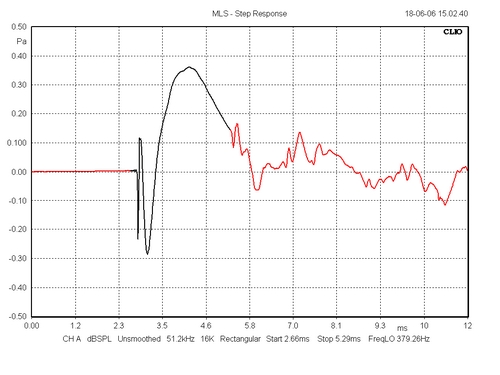Poor Man's Strad Excel CROSSOVER CABINET MEASUREMENTS SPEAKER KIT SEAS W22EX001 + W15CY001 + 27TFFC
This
will be a short presentation of the
PMS-EXCEL as most info on design considerations
is available at Poor
Man's Strad.
The Cabinet: Go to PMS file.
The crossover for the EXCEL variant takes a few more components compared to the paper-coned version. No wonder, the midrange driver's cone break-up has to be carefully suppressed to render a clean treble. However, the 2nd order filter between bass and mid could be maintained from the PMS with a few modifications. The mid low-pass section is 3rd order + a notch filter and the tweeter maintains a 3rd order filter similar to the PMS.
Complete speaker kit available from contact@jantzen-audio.com Download Kit Sales Presentations here. (pdf file) Please all technical questions at troels.gravesen@hotmail.com Sound of PMS-EXCEL This is the part I really hate because describing sound is impossible. We are extremely sensitive to any negative comments on performance. We can take any high-end speaker and start lining up what this speaker is not good at, because no speaker does it all. But we rarely read reviews like this in magazines. The magazine would very soon run out of speakers offered for reviews. A review is meant to sell speakers and we have to carefully read between the lines to try to find any reservation from the reviewer - in case there are any. Mostly it's "bla...bla... this is the best speaker I have had in my system, etc." Useless! Thanks to the internet
we are seeing more critical reviews although a
lot of "amateur" reviewers try to copy
the style and language of their professional
colleagues. The reduced sensitivity of the PMS-EXCEL was immediately recognised when the first speaker was compared to the PMS. Going from 88 dB to 91 dB/2.8V makes a difference and the 150 wpc amp in my workshop has to work harder to render the soundstage of the PMS. Next thing was that the EXCEL drivers are low-coloured compared to the paper cones and at the same time I warn you to put too much into this. Every driver colour the sound due to the materials used in driver construction. I'm sure that some will favour the paper version due to speed and transient attack and others will favour the ECXEL due to the more cool and clean sound. It's a matter of taste. Another thing is that higher sloped crossover usually provides a "cleaner" sound as the drivers don't try to do things in the neighbouring area where it may not be best performer, and the blend of the sound from two drivers sharing a certain frequency band will always be a mixed blessing of different sounds. The PMS can be driven
from small amps where the PMS-EXCEL gets better
and better the more watts you put behind. The
EXCEL drivers can grow with the task of larger
amps, where the PMS really doesn't need a whole
lot of power to perform the best. This doesn't
mean the EXCEL can't be fully enjoyed from an
e.g. 50 wpc valve amp, which is what I'm running
right now when this is written. The Copland CTA
505 does very well with the EXCEL set-up - as it
does with the Acapella SEas. All depends on how
loud we play.
Left: Impedance of drivers in cabinet
without crossover. Vent tuning for bass is around 33-34
Hz. Vent tuning for mid = 70 Hz, not a big issue as the
point of crossover is around 350 Hz. Stuffing the mid
vent does very little to the sound.
Left: For those interested, the individual
response of drivers with no crossover. Please notice the
humongous peak (cone break-up) from the bass driver at
around 5 kHz. This is some 15 dB above average level!
However, crossing over at 350 Hz can be done 2nd order
without further fine-tuning. Right: Displaying the overall SPL response is tricky due to the gating technique of the CLIO measuring system. The graph above is made from three measurements and merged at 200 and 700 Hz. Basically the speaker is flat from 500 Hz to 20 kHz and I would have to take the speaker outside to get a better picture of performance below 500 Hz.
Left: The mid low-pass section was tried with a 2nd order + notch filter (blue graph), but after some days of listening there was "something" to the treble that wasn't right. A 0.33 mH was added to the mid and the shunt cap increased from 10 uF to 13.3 uF and the green graph appeared. Result: Clean treble. Only shows the importance of suppressing these resonances more than 20-25 dB, which is often seen from e.g. the SEAS kits. Right: Step response showing inverted polarity of tweeter and mid. That's it! |
